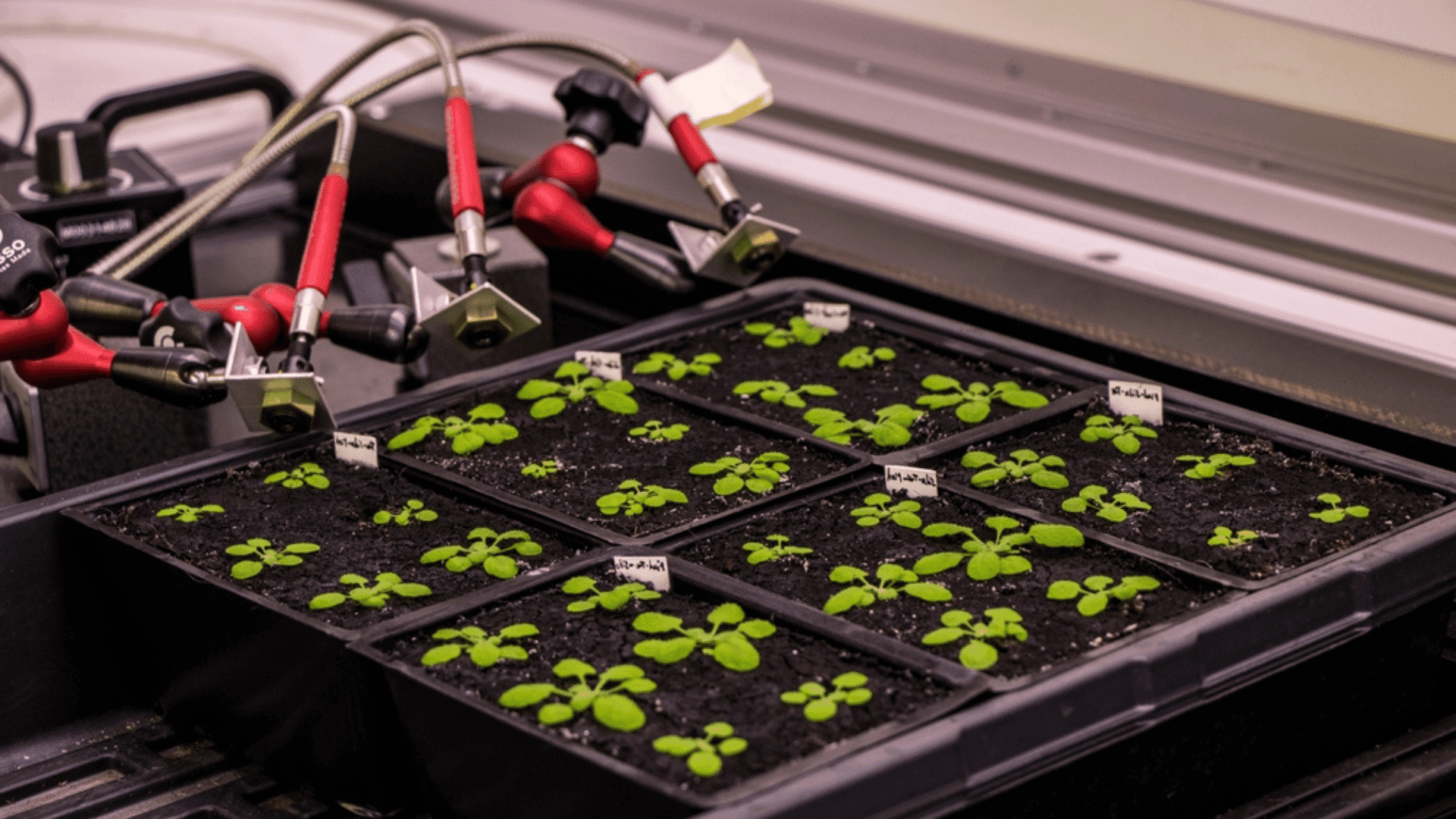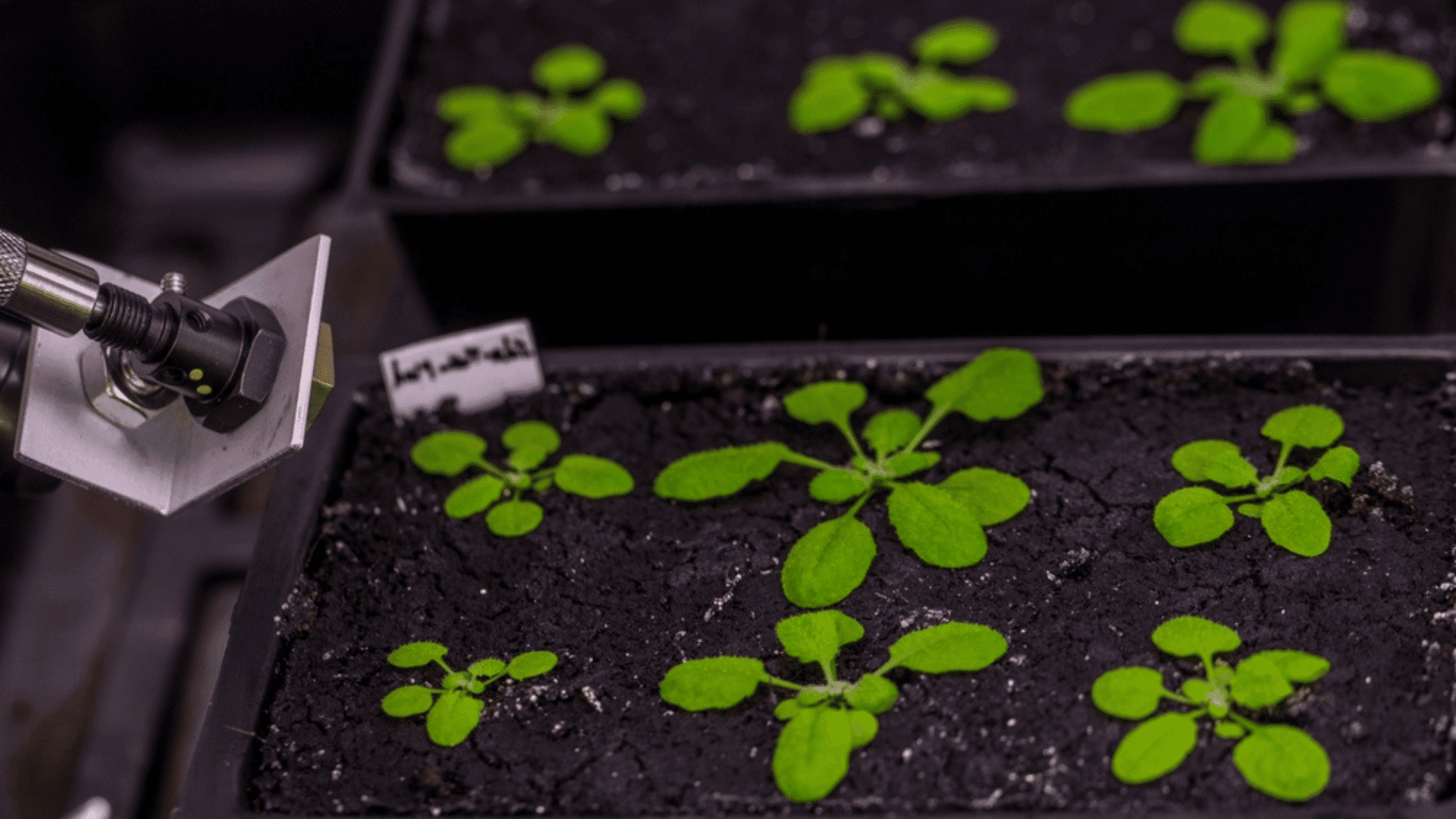Scientists have used genetic engineering to cause plants to change colors when they encounter pesticides, which could help us better understand their needs.

A team of researchers at the University of California, Riverside hacked the natural stress response system in Arabidopsis thaliana, a small white-flowered plant from the mustard family that serves as a common model organism in plant biology labs. When exposed to the pesticide azinphos-ethyl, A. thaliana turns from green to red, highlighting the contamination.
“It’s an unambiguous readout of what’s in the environment,” says Ian Wheeldon, co-lead researcher and a UC Riverside chemical engineering professor. Wheeldon believes that this research will give plants the power to share what they’re experiencing visibly, thereby deepening people’s understanding of them.
Other methods of discovering whether plants have been exposed to contaminants such as bringing samples back to the lab for testing can be costly and time-consuming. Sensors in a field are capable of tracking certain factors such as soil conditions, moisture, and light levels, but they still require a power source and maintenance.
“This technique is nice because you don’t need any special equipment. You just see it,” says Yunde Zhao, a professor of cell and developmental biology at the University of California, San Diego who was not involved in this project.

The study was recently published in Nature Chemical Biology and is the first to use a visible marker to detect organophosphate pesticides in plants. The team engineered the plants to respond to the pesticide azinphos-ethyl, which has been banned in the European Union because of its toxicity in mammals.
Arabidopsis, like all plants, uses a hormone called abscisic acid (ABA) to send alerts when it’s stressed by conditions like drought, cold, or changes in soil chemistry. ABA binds the receptors in the plant, causing its pores to close and hold more water.
The research team managed to rewire this pathway by changing the shape of the ABA receptor’s binding pocket, molding it so it could also detect and bind to azinphos-ethyl molecules.
Binding something other than ABA to an ABA receptor could trigger the plant’s stress response, but this still wouldn’t be visible to the naked eye. To make A. thaliana turn red on cue, the researchers gave the plants a gene from beets.
The team used a long synthetic DNA sequence developed by Zhao’s lab called RUBY. The sequence contains instructions for making betalain, the bright red pigment that gives beets their signature color.
When exposed to the pesticide, the engineered compound acts as a sensor, activating RUBY and causing the plant’s leaves to turn from green to a deep red.

“This paper is opening up a new capacity to reprogram plant responses,” says Stanford bioengineering professor Jenn Brophy, who was not involved in the study.
Theoretically, based on this new research, one could make a plant turn red in response to any number of chemicals. The team also experimented with temperature to allow for the same plants to respond visibly to a second chemical called diazinon, an insecticide that’s currently banned for residential use in the United States.
Using the plant’s ABA signaling, they caused the leaves of the plants to increase in temperature when exposed to the chemical which can be sensed via infrared night-vision cameras. The more molecular switches that can be engineered, the more practical applications and insights we can gain.
“In the long run, I think that we will be able to create biotechnologies that can help provide the public or other specific users with information on chemicals in the environment,” says Wheeldon. “Real-time feedback about what is in the environment—for example, is the local water supply contaminated? Are bad actors using harmful chemicals in their industrial processes?”






